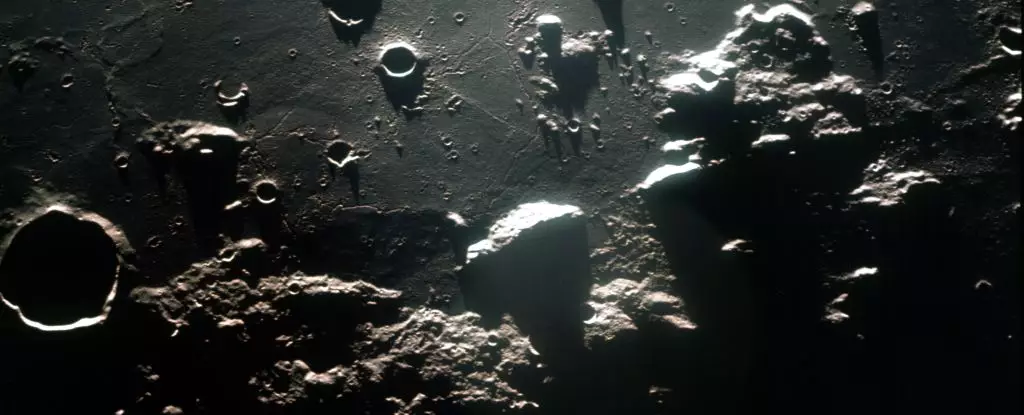For centuries, the Moon has captivated the imagination of scientists and laypersons alike, often evoking images of a barren and desolate landscape. However, recent geological studies reveal a more intricate narrative regarding the presence of water on the lunar surface. New analysis based on mineralogical maps has uncovered abundant water and hydroxyl molecules scattered across various terrains and latitudes on the Moon, challenging our long-held assumptions about its arid nature. This revelation not only enhances our understanding of the Moon’s geological past but also holds significant implications for future lunar exploration and habitation.
Reevaluating the Perception of Moisture on the Moon
Traditionally, the prevailing belief among scientists was that water predominantly resided in the cold, shadowed craters of the lunar poles. This conclusion arose from earlier studies suggesting that these craters, shielded from the Sun, could host thick deposits of ice. Although it was acknowledged that no visible liquid water exists on the lunar surface, emerging data indicate that water compounds are present, embedded in the Moon’s rocky crust. Roger Clark, a planetary scientist at the Planetary Science Institute, states that the potential for water-rich deposits even at the equator opens new avenues for understanding both the Moon’s geological history and future human exploration.
Significant strides in technology have propelled our exploration of the Moon, notably illustrated with data collected from the Moon Mineralogy Mapper (M3) aboard India’s Chandrayaan-1 mission. This instrument, operational between 2008 and 2009, analyzed the infrared light reflected from the Moon’s surface, revealing signatures consistent with the presence of water and hydroxyl. By systematically mapping the distribution of these molecules, the research team found that water is not limited to the polar regions but exists across all lunar latitudes, albeit in varying concentrations.
This innovative approach enabled scientists to refine their search and expand their understanding of the Moon’s mineral composition, demonstrating that even at mid-latitudes, one might encounter water-rich materials, altering the paradigm of lunar exploration.
Despite the findings of water molecules, it is essential to grasp the dynamic processes that impact these substances. Water on the lunar surface does not remain stable indefinitely; it is susceptible to the harsh solar radiation and wind, which can diminish or even eliminate water over extended periods. The research indicates that water exposed due to cratering events is gradually lost, yet the destruction of water does not erase all traces—hydroxyl remains detectable. Hydroxyl serves as an important marker, suggesting that while water may be fleeting, its molecular cousins live on.
Additionally, this dual presence of water and hydroxyl highlights the Moon’s complex geological history, wherein both volcanic activity and impacts have facilitated the transport of these materials to the surface.
Insights into Lunar Surface Features
Another intriguing finding is the relationship between the Moon’s distinctive geological features—specifically, the enigmatic lunar swirls and their associated water signatures. These swirling patterns have puzzled scientists for years, partly due to their water-poor nature, with new data reinforcing that understanding. The researchers propose that these swirls may represent ancient formations eroded over time, leaving behind residual water signatures that hint at their past conditions. This presents an exciting opportunity to investigate lunar geology further, potentially unraveling the processes that shape these unique surface features.
Moreover, the research offers a glimpse into how lunar otologists might harness this mineral wealth. By processing hydroxyl-rich minerals, future astronauts could generate potable water, turning the Moon’s surface into a feasible resource for sustained habitation.
Recent discoveries on the Moon reveal a landscape richer in water than previously acknowledged, reshaping our narrative about this celestial body. The presence of water and hydroxyl at various locations emphasizes the importance of rethinking lunar geology not only as a historical record but also as a resource-rich environment for future explorers. By embracing cutting-edge technologies and applying novel interpretations to existing data, we are poised to uncover the lunar secrets that hold the key to sustainable human exploration and possibly interstellar ventures. The Moon, once perceived as an arid and desolate realm, now emerges as a reservoir of mystery and potential, beckoning us to delve deeper into its hidden treasures.


Leave a Reply